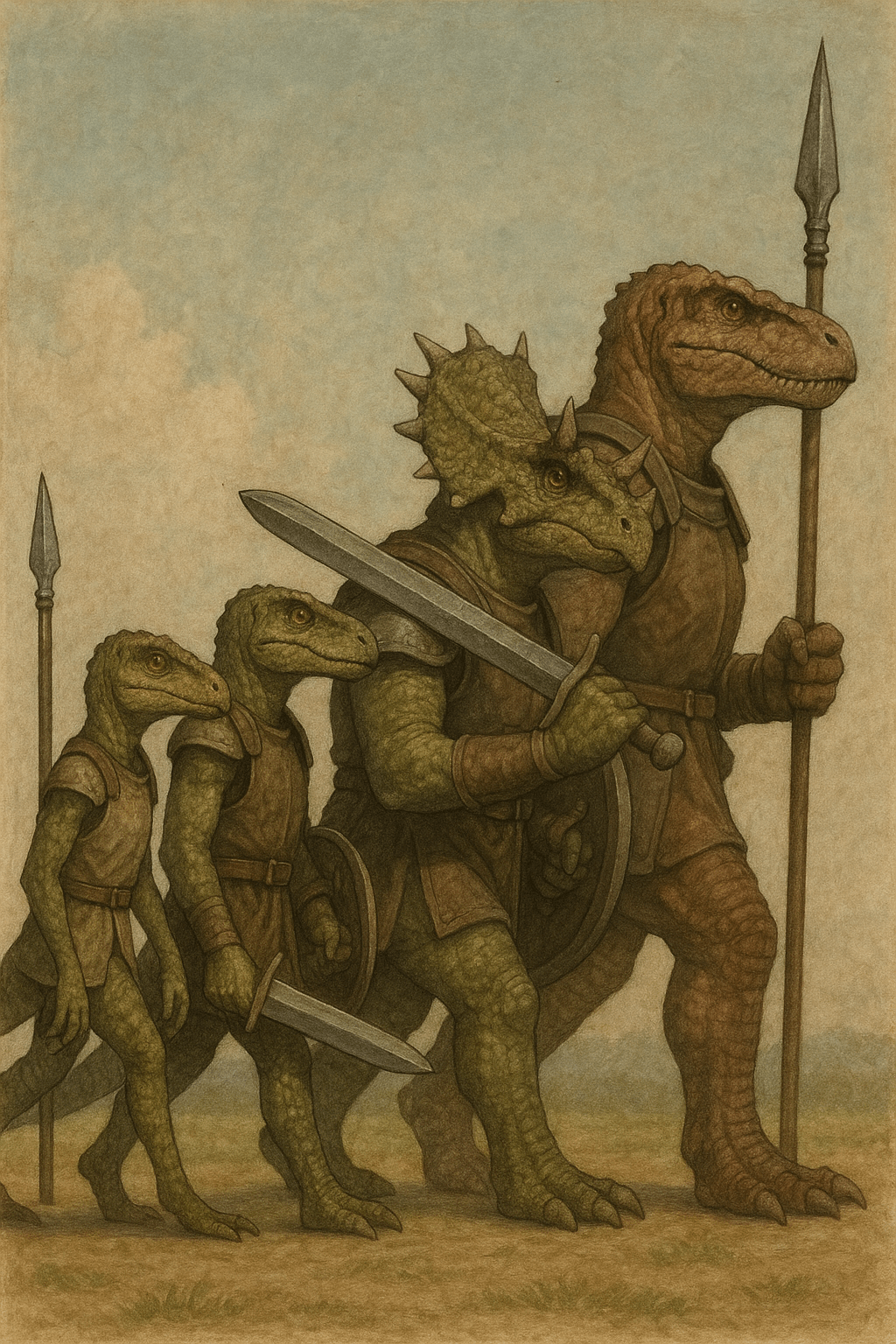
What If the Asteroid Missed - A World Ruled by Dinosaurs (Part II)
Share
About 66 million years ago, a ~10 km (≈6.2 miles) asteroid struck the Yucatán Peninsula and ended the Age of Dinosaurs (the Chicxulub impact). But if that rock had missed Earth, our planet—and history—might have unfolded very differently. This article is a work of speculative evolution and alternate history, grounded in science yet free to imagine.
Scenario 1: A Dinosaur-Dominated Earth
Giant herbivores would still roam forests and wetlands while apex theropods ruled the top of the food chain. Mammals would likely remain small and nocturnal, surviving in the ecological shadows. Vast grasslands might never become dominant; instead, humid forests and marshes would define global landscapes.
Scenario 2: Humanity Might Never Have Appeared
With dinosaurs still thriving, primates may never gain the evolutionary foothold needed to expand brain size. No agriculture, no industry—perhaps not even the concept of “civilization.” Our own existence could be seen as a lucky consequence of the K–Pg extinction.
Scenario 3: Intelligent Dinosaurs and the Possibility of Civilization
If some small, big-brained species—troodontids, for example—had continued to evolve, an entirely different kind of civilization might have emerged.
- Fire & technology: mastering heat, progressing from shaped stone to metal smelting.
- Society & cities: stratified urban life, perhaps with aerial corridors integrated for pterosaurs.
- Symbols & history: gestures and vocalizations expanded into written signs that record law, myth, and science.
Lifespan
Retaining reptilian longevity, intelligent dinosaurs might live 60–80 years on average, with elite individuals surpassing 100 years. Slower generational turnover could favor long-horizon planning and stable institutions over short-term fashion.
Diet
- Cultivated ferns and gymnosperms as primary starch sources.
- Hunting small animals and fishing; roasted meat and fish as prestige foods.
- Urban diets tending plant-forward, with meat reserved for festivals and ceremony.
Climate Without the Impact
Absent the post-impact cooling, Earth likely remains warmer and wetter overall. CO₂ stays several times higher than today; seas run higher; shallow epicontinental oceans fringe the continents. Ammonites and large marine reptiles persist, and polar ice is minimal.
Communication & Culture
Intelligent dinosaurs could develop a multi-layered language that blends sound, motion, and visual display.
- Vocal language: complex, bird-like repertoires with pitch and rhythm encoding grammar.
- Body signaling: tail gestures and color-shift displays to express nuance and emotion.
- Script: carved signs and patterned motifs on stone evolving into a highly aesthetic writing system.
Coexistence with Giant Dinosaurs
Argentinosaurus-scale titans remain part of the biosphere. Civilizations might revere them as sacred, harness them as living engines, or fear them as forces of nature. Their low intelligence keeps them outside the civic sphere, but their symbolic power shapes religion and architecture.
Colossal-Dinosaur Fights as Mass Entertainment

- Ritual: outcomes interpreted as divine will guiding state decisions.
- Festival: amphitheaters drawing tens of thousands, uniting city-states in spectacle.
- Cultural imprint: victors immortalized in stone statues, reliefs, epics, and songs.
Stone Statue Culture of the Dinosaur Civilization: Granite & Sandstone Colossi
The most enduring heritage of an intelligent dinosaur civilization would likely be monumental stone statues modeled after giant dinosaurs themselves. Colossi carved from granite and sandstone—materials prized for strength, grain, and weathering resistance—could rise 20–30 meters (≈65–100 feet) high, lining ceremonial avenues and guarding city gates.
- Materials & methods: granite for durability and polish; sandstone for ease of carving and warm stratified textures. Quarry faces would preserve tool marks, lifting bosses, and wedge slots. Individual blocks might weigh 20–80 metric tons (≈22–88 short tons), transported on sledges and rollers over water-lubricated trackways.
- Iconography: feathered crests, armored scales, and sweeping tails stylized into canonical forms. Eyes and claws could feature obsidian or copper inlays; traces of mineral pigments hint at original polychromy.
- Inscription & ritual: pedestals carry carved scripts that mingle law, myth, and astronomy. Statues align to solstices and star paths, serving as territorial markers and civic shrines.
- Landscape design: megalithic boulevards, ring courts, and stepped terraces integrate water channels and shade canopies for a warmer, wetter Earth.
- Preservation: granite endures via low water absorption and interlocking crystals that resist frost shattering; sandstone weathers into haunting silhouettes—still legible as culture even after faces fade.
In this vision, stone is the civilization’s most faithful archivist: granite keeps the edges sharp; sandstone keeps the stories soft, but visible.
The Inevitable Rise of Colossal Weapons
When megafauna can flatten walls, states escalate in kind. As in human history—slings to catapults to cannon—threat scale drives weapon scale. Engineering races follow politics and survival.
Suppression by Giant “Robots”
- Materials: iron and copper plating over stone or timber frames.
- Power: hydraulics, steam, and gear trains channeling water and heat.
- Role: city-defense platforms to corral rampaging giants—later, public spectacles of “dinosaur vs. machine.”
Summary — If the Asteroid Never Came
The dinosaur extinction was the doorway through which our lineage walked. Without it, Earth stays forest-wet and warm, and a non-human intelligence could plausibly ascend—from signal to script, from village to city, from stone to metal.
By contrast, Homo sapiens has existed for only ~300,000 years, began farming ~10,000 years ago, and entered the industrial era ~250 years ago. Measured against a hypothetical 66 million years available to dinosaurs, that is roughly 220× our civilizational timespan.
This is a speculative tale of what might have unfolded over 66 million years. Given that expanse of time, intelligent dinosaurs could conceivably have built a civilization more advanced—and more enduring—than ours.
